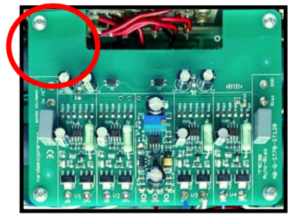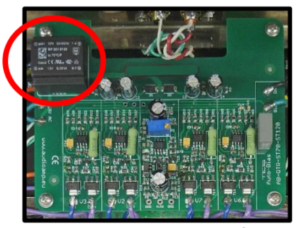Frequently Asked Questions (FAQ)
Q1: You removed the Rectifier tube in the Dyna-70 Ultimate Upgrade; isn’t this essential to the ST-70 sound signature?
There are lots of opinions on use of Rectifier tubes. Often these “opinions” are just that and not based on sound engineering principles. In general, use of a Rectifier tube keeps the ST-70 “stock”- the way Dynaco designed it. For purists, we endorse using a “good” Rectifier tube in a stock ST-70, if that’s what you appreciate and enjoy listening to. However, there are limits you likely already know about in access to “good” rectifier tubes, especially if you already own an ST-70 amplifier. Let’s review several aspects of Rectifier tubes in ST-70’s:
- First, supplies of RCA, Mullard, and Telefunken 5AR4/GZ34 Rectifier tubes are scarce. Not everyone can afford $100+ (Q1/23) for a NOS Rectifier tube. Let’s also face the reality that new production Rectifier tubes come from countries that are not friendly to the United States or “the West”. The better, new production GZ34/5AR4 tubes such as Gold Lion, Sovtek or Tung Sol are well over $50-60. Ideally an ST-70 today needs 2 Rectifier tubes given how highly loaded it is and how poorly most new production GZ34’s perform, leading to the next point.
- Second, most new production, imported 5AR4/GZ34’s are not as well made as North American and Western European 5AR4/GZ34’s were made. There are several new production 5AR4/GZ34’s, which New-in-Box (NIB) can barely power an ST-70 without stressing the tube and blowing fuses. Search the internet; you will find many reports of NIB imported 5AR4/GZ34’s that fail after a few weeks to a couple of months use in ST-70’s. As a ST-70 owner, likely you’ve experienced this already. If you’re committed to using a Rectifier tube in your ST70, we suggest use of a Tung Sol, Sovtek or Gold Lion 5AR4/GZ34 for a new production Rectifier tube.
- Third, there some who argue that they prefer a Rectifier tube because it produces “sag” and “distortion” or it “sounds better”. Here is the unabashed truth about Rectifier tubes in a piece of stereo equipment designed for high-fidelity sound reproduction: You want stability and consistency in the Power Supply. You want no variation (sag, distortion, voltage drop, etc.) in the power supply of your stereo equipment – PERIOD!
NOTE: Rectifier tubes in Guitar amplifiers are a different issue! Often Guitar players want their amplifiers to intentionally distort upon command. However, musicians are creating music, not reproducing Musicians want sound “effects” to make their “signature” sound when they play. This is exactly the opposite of what we want in sound reproduction from a stereo system.
- Forth, in the 1960’s some of the most iconic tube stereo amplifiers from renowned companies such as McIntosh, Dynaco, and Fisher and utilized solid-state Rectifiers in several amplifier designs. A sample list includes the following amplifiers / integrated amplifiers (most will agree these are some good sounding tube audio pieces):
Dynaco: SCA-35 & ST-35
Fisher: X-100-B, X-100-A
McIntosh: MC-225, -240 and -275
- Finally, the best reason for removing the 5AR4/GZ34 Rectifier is that it does not have enough current to power the 3 added 6SN7 tubes, even with elimination of the Rectifier tube, a stock ST-70 Power Supply just doesn’t have the power to run all the heater filaments required in the Dyna-70 Ultimate Upgrade.
- In summary, most new tube amplifier-based audio designs today do not use a Rectifier tube and depend upon solid-state rectification for DC power. Here are just a few samples of U.S. designed and manufactured stereo amplifiers with solid-state rectification:
Audio Research: VT-100, VT-200. VTM-200, REF-110, REF-150/150SE, REF 160M
Conrad Johnson: LP125sa, CL62/SE, CL120/SE
Miller Audio LLC: Dyna-70 Ultimate ST-70 Upgrade
Rogue Audio: Stereo 90 /100, Atlas Magnum, Cronus Magnum, M-180
Q2: You removed the Capacitor Can also, why?
Cost: A 4-Section electrolytic cap can for the ST-70 are approximately $50+; roughly $12.50 per section (not
including taxes and S&H fee’s). We can use discrete caps rated for 450V and 105oC and execute a better capacitor filter network than using a multi-section cap can and improve voltage and temperature design margins at a lower cost than using a multi-section cap can.
Q3: ANOTHER ST-70 driver upgrade? What makes Miller Audio LLC's upgrade better than other ST- 70 Driver upgrades now available?
Q4: I’ve seen Forum discussions about the Auto Bias module, weren’t there some problems with these? I’ve seen reports of failure with the Auto Bias modules in the web.
Q4: Photo A&B - Comparison of First & Second Generation Auto Bias Modules
Q5: What does the Dyna-70 Ultimate Upgrade kit cost?
Dyna-70 Ultimate Upgrade w/ Manual Bias $319.95 MSRP
Dyna-70 Ultimate Upgrade w/ Auto Bias Module $459.95 MSRP
Manual or Auto Bias PCB $65.00 MSRP
(For those who want to purchase a Dyna-70 PCB and populate with your own choice of components)
Q6: $300+ for an ST-70 Upgrade? That seems high...
Another perspective: Have you seen what ST-70’s are selling for today? 5-6 years ago, used ST-70’s were $300-$600; today decent ST-70’s bring $800-1200 or more, with restored or newly built ST-70’s going for $1500-$2000 and higher. The truth is that ST-70’s have appreciated to the point that one can justify spending more on upgrades because they are worth more today, modified or not.
Q7: Your upgrade costs more than that- one must buy a bigger, more expensive PA-060 Power Supply Transformer, right?
Correct, there is no way around it- to get an ST-70 to really “sing” it needs more stable, filtered power- it’s that simple. One cannot power our Dyna-70 Ultimate Upgrade without using a larger Power Supply Transformer. However, you will hear the results the first time you play your favorite tunes on a Miller Audio Dyna-70 upgraded ST-70. Again, we promise or your money back (it’s that simple too).
The good news is that if you were to buy a new ST-70 amplifier kit today, it already comes with the larger PA-060 Power Supply Transformer as standard equipment; everyone realizes the ST-70 needed more stable power to perform well.


